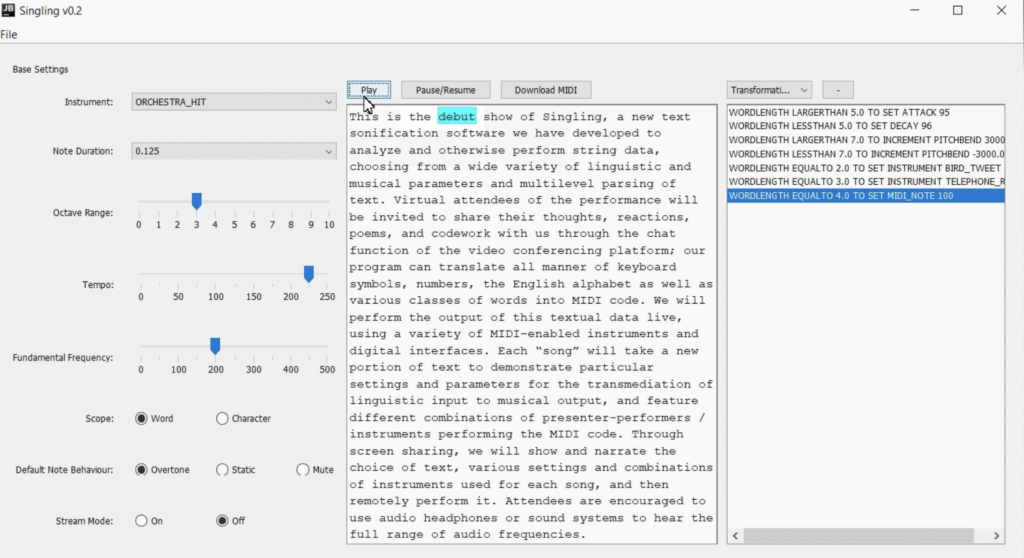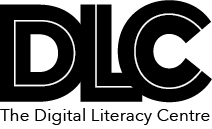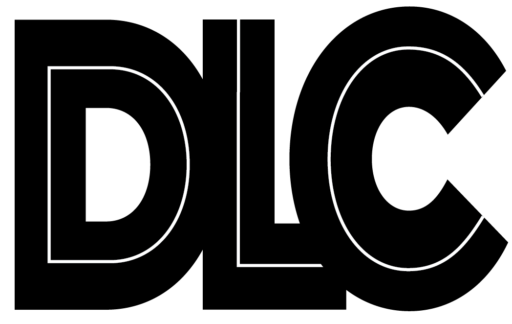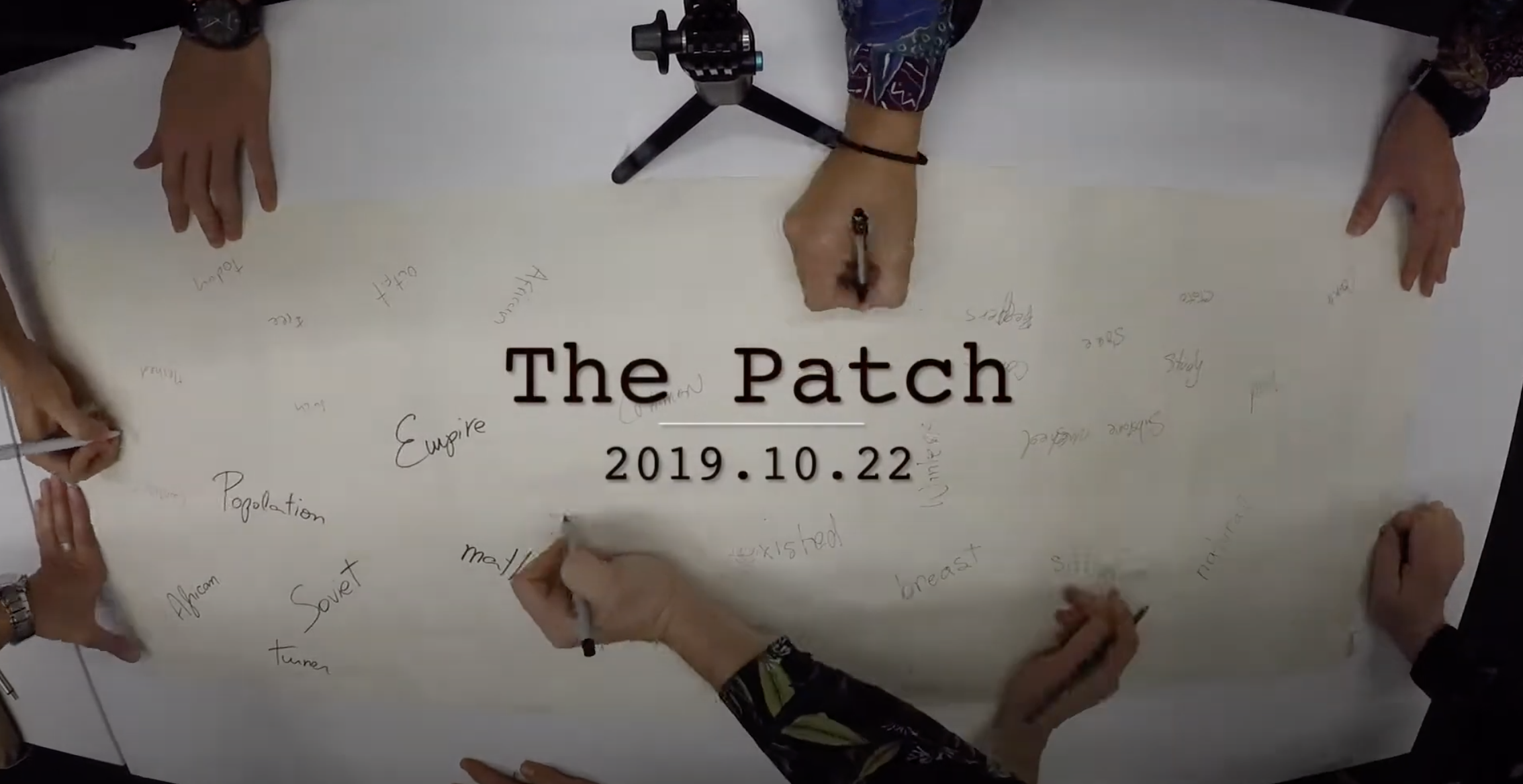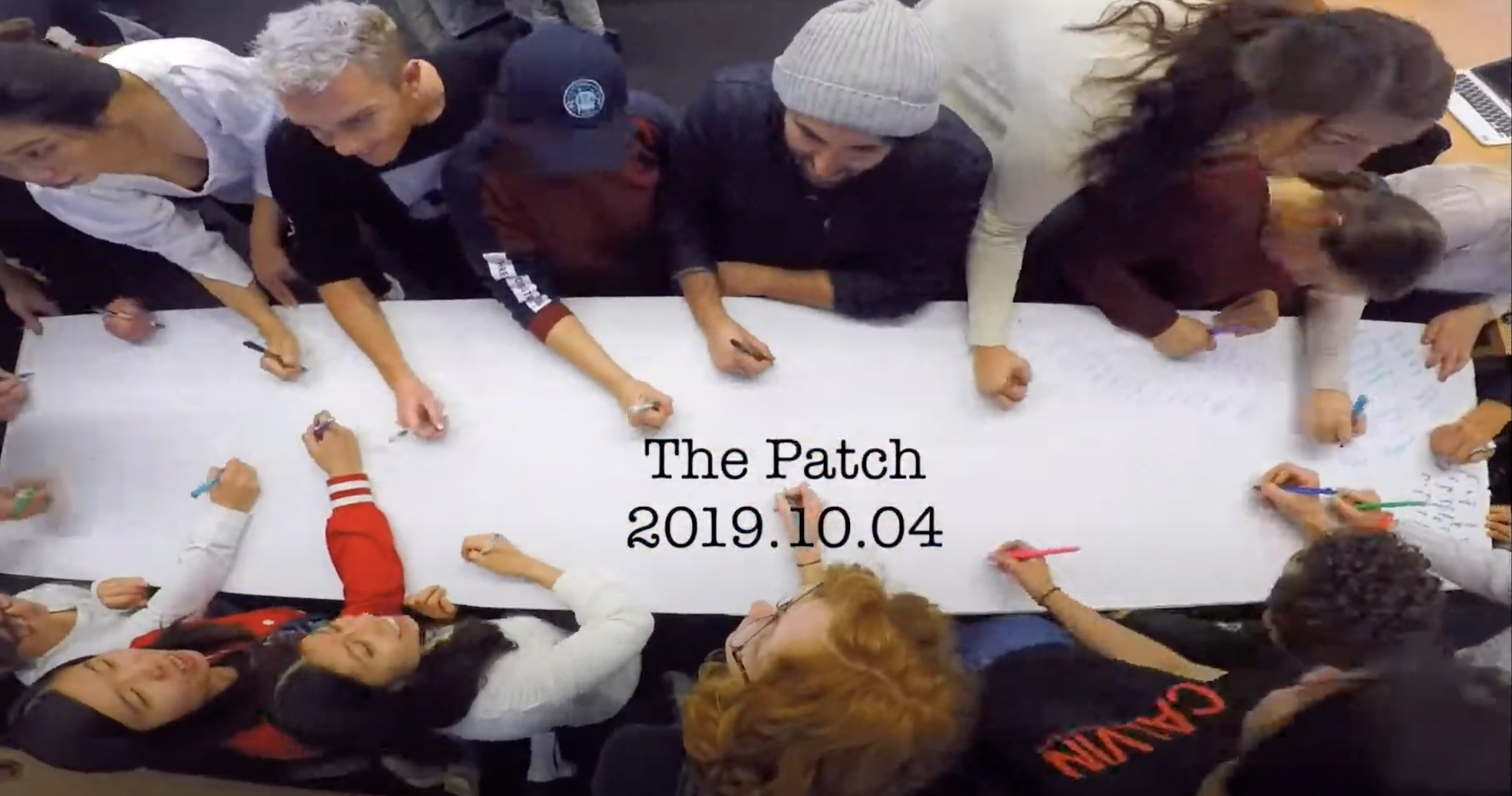The Patch Schematic
This methods workshop utilizes a number of stages and states of textual transformation, alternating like current between analogue and digital techniques, utilizing different modalities of cognition, fluctuating between data analysis and creative remix. And the output is typically a video. If you’d like to see how a data assemblage of the patch process look and sounds, here are some links from previous workshops given by the DLC.
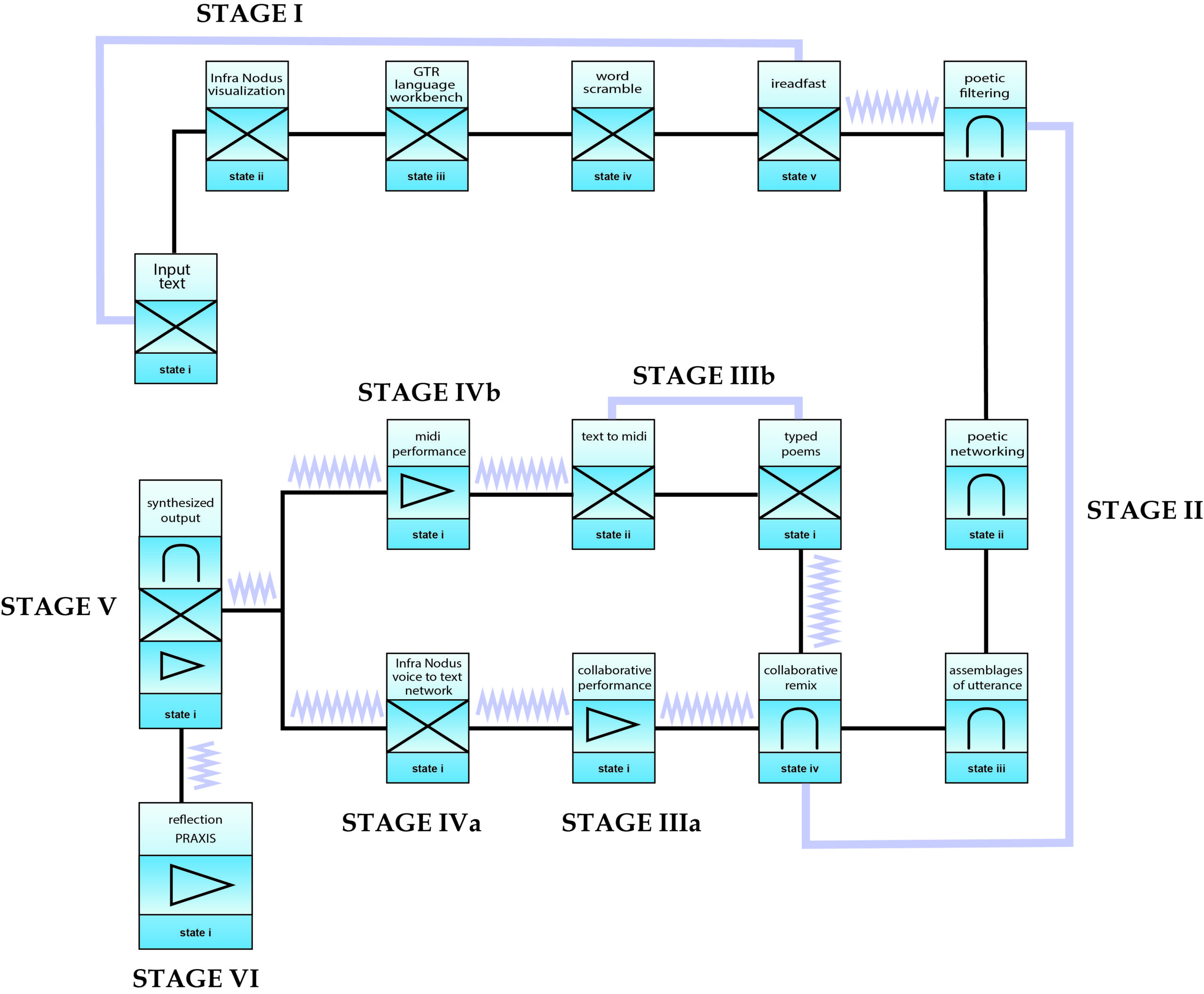
Infra Nodus
State I state i
Network analysis and visualization tool for text mining, topic modeling, data analysis, and structural gap detection.GTR Language Workbench
State I state ii
A software project “explore how creative writing (and language use in general) might take advantage of digital processing applications to create new and innovative forms of literary art, electronic or otherwise. The tool can best be described as a digital studio for language which allows for any number of literary and aesthetic modifications to texts…. Through a collection of various pattern matchers, the software can detect numerous linguistic structures both syntactic and semantic. The pattern matchers create linguistic data models by generating annotations on a text. Document processors act on these annotations to perform analysis, transformations, or to generate new texts. The software functions similar to existing word processing software, but greatly extends the compositional options available which have not changed much in traditional word processing applications since their initial development in the early 1980s.

Word Scramble
Stage I state iii
Instructions: Enter your data set into a word scramble tool to ‘unread’ the linear narrative succession and open up the data to new combinations and interpretations.
Creative Reading
Stage I state iv
There are a whole host of available programs out there, both online and downloadable, that allow you to encounter your textual data one word at a time and at various speeds. These programs were designed to help readers increase their reading speed, but can be used for the research purpose of re-encountering and/or un-reading your data to allow for new pathways and connections.
Check out for a free online tool: https://accelareader.com
Poetic Filtering
Stage II state i
Instruction: As you let the words wash across your eyes, write down those that appear to you as louder than the others. Try to scatter the chosen words on the page/environment without grouping or creating lists. The point is not to capture all the words you see, but only those that resonate with you for whatever reason. Don’t think too much! Try to refrain (at this point) from reading meaning into the succession of data.
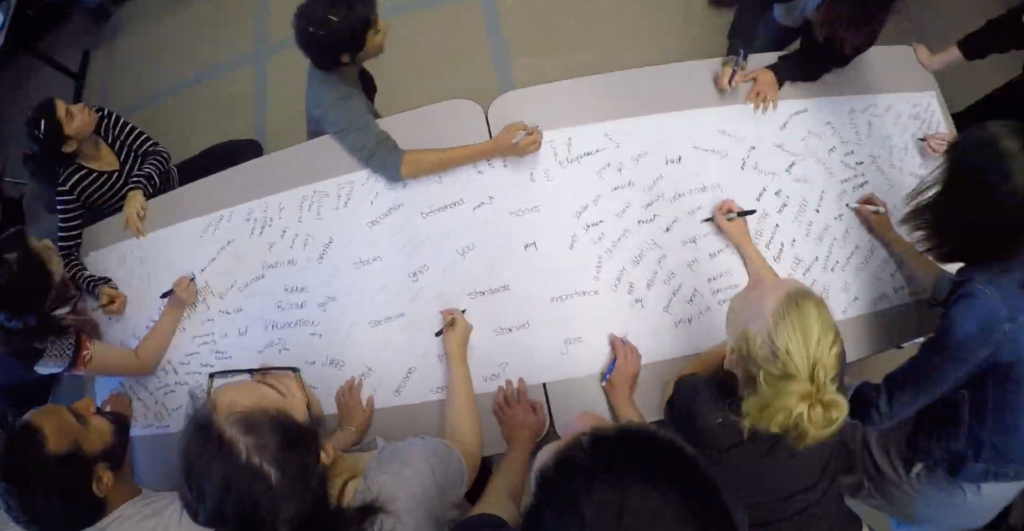
Poetic Networking
Stage II state ii
Instructions: With a coloured marker (digital or magic), begin to create networks of the individual node/words. Gather together networks of three to five words. Gather them together using poetic logic and emergent resonations. Don’t think ahead to the end product/poem/meaning.
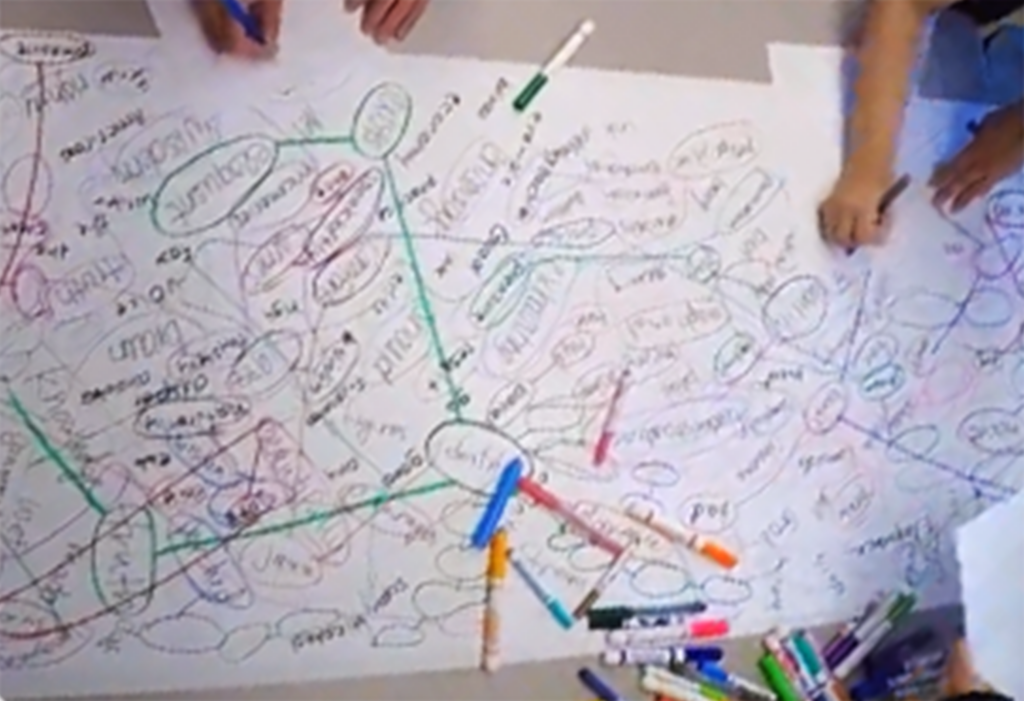
Assemblage of Utterances
Stage II state iii
Instructions: Choose at least five networks and record the combination of words however you wish. Of each network create an individual poetic line. Do not create a coherent poem of your chosen networks as you will be creating a collaborative poem in the next step. Transform each chosen network into a poetic utterance. Interpret this stage as you wish – the utterance can be anything from a sentence to individual letter formations. You may add words at this point that are necessary for your utterance.

Collaborative Remix
Stage IIIa
Instructions: In a small group, combine your poetic utterances into a collaborative poem.
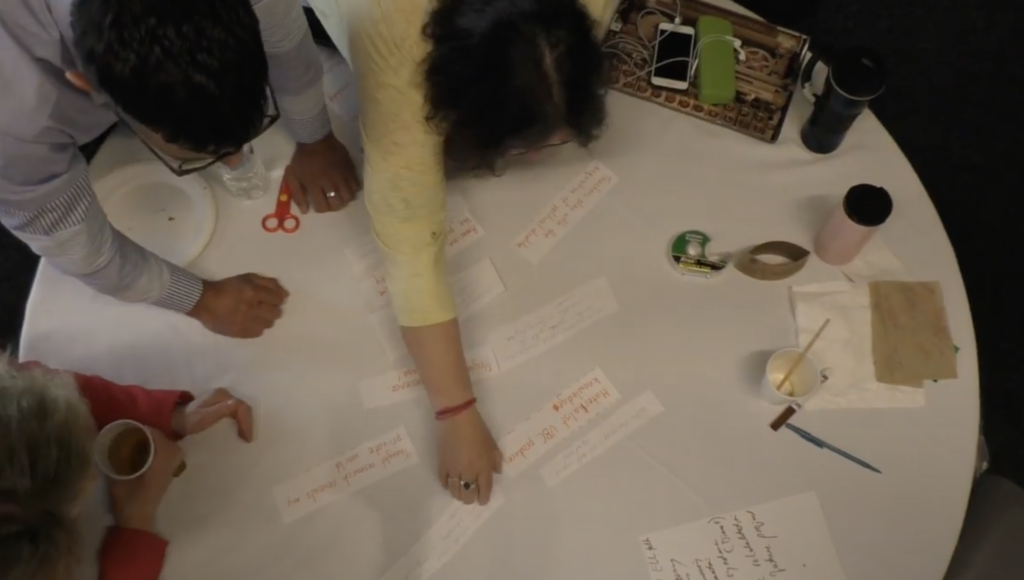
Collaborative Performance
Stage II state v
Instructions: Collaboratively perform your poem!
Infra Nodus networked performance
Stage IVa
Instructions: Your performance will be networked live in Infra Nodus. This step invites the generative interference and glitches of voice to recognition software as the program attempts to read the sounds of your collaborative performance. There is something of interest in the losses and gains of digital-analogue transformations
Sonification
Stage IIIb and IVb
Instructions: Using Singling, sonically and viscerally elaborate your data poems, exploring the many parameters and sonic environments that can emerge in the transformation of linguistic data into sound.
